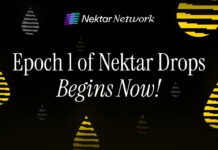
Less than 24 hours ago, the first feature-complete pre-release of EOSIO Dawn 3.0 was uploaded on github.com. This is part of the EOS (EOS) project roadmap to release EOSIO 1.0 later on in the year in June. EOSIO 1.0 is anticipated as being the most powerful platform for building blockchain applications. The release of EOSIO Dawn 3.0 comes 4 months after the release of version 2.0.
Dawn 3.0 comes with new features that had not been addressed in the original EOSIO Whitepaper but were as a result of the development process of creating the platform that will be effective, flexible and easy for developers to work on during the creation of their own Decentralized Applications.
EOSIO Dawn 3.0 comes with improved scalability features that allow for future implementations without the hard forking found in other coins and platforms. Another goal of EOSIO is to have inter-blockchain communication to enable proper verification and authentication of events in other blockchains. In an age where Ethereum smart contracts have been proven as being vulnerable due to communication bugs in the blockchain, this is a welcome aspect of the EOS Platform.
The EOS Platform also has other security features to guard against hacking, hardware failure, lost hardware and lost passwords. There is the addition of a user-configurable time delay for different transactions on the blockchain that can go anywhere from a few seconds to a few days before they can be applied. With this delay, a transaction must be broadcast to the blockchain for the set time. During which the user can take measures to reset their accounts with higher permission levels to cancel the transaction and improving security.
These aspects of EOSIO Dawn 3.0 are in line with the goals of the final EOS platform envisioned in the project’s whitepaper. In the whitepaper, the EOS team says in the abstract that:
The EOS.IO software introduces a new blockchain architecture designed to enable vertical and horizontal scaling of decentralized applications. This is achieved by creating an operating system-like construct upon which applications can be built. The software provides accounts, authentication, databases, asynchronous communication, and the scheduling of applications across many of CPU cores or clusters. The resulting technology is a blockchain architecture that may ultimately scale to millions of transactions per second, eliminates user fees, and allows for quick and easy deployment and maintenance of decentralized applications, in the context of a governed blockchain.
EOS.IO software uses what is known as a consensus algorithm which is aimed at meeting the performance requirements of applications on the blockchain. This algorithm is known as Delegated Proof of Stake (DPOS). This algorithm allows those who hold tokens on the blockchain to select block producers through a continuous approval voting system. The software allows blocks to be produced every 0.5 seconds with only one block producer allowed to do so at any given time.
The above aspects of the EOS blockchain, and more, makes the project more capable of changing the world of cryptocurrencies and blockchain as we know it.
Market analysis shows that EOS (EOS) has gained 5.68% in the last 24 hours, and at the moment of writing this, as the rest of the market seems to be affected by a weak Bitcoin (BTC – $6,626). EOS is trading at $6.03. This is a 15.4% increment from a Sunday (April 1st) low of $5.27 when the market was also behavior like today with a Bitcoin that was valued at $6,527.
At its peak on January 13th, EOS was trading at $18.50. Perhaps with the release of the final blockchain software in June this year, shall we see the coin rising to its full potential and back to double digit values in the market.
Follow us on Telegram

Theindependentrepublic.com is author of this content, TheBitcoinNews.com is is not responsible for the content of external sites.
Our Social Networks: Facebook Instagram Pinterest Reddit Telegram Twitter Youtube











